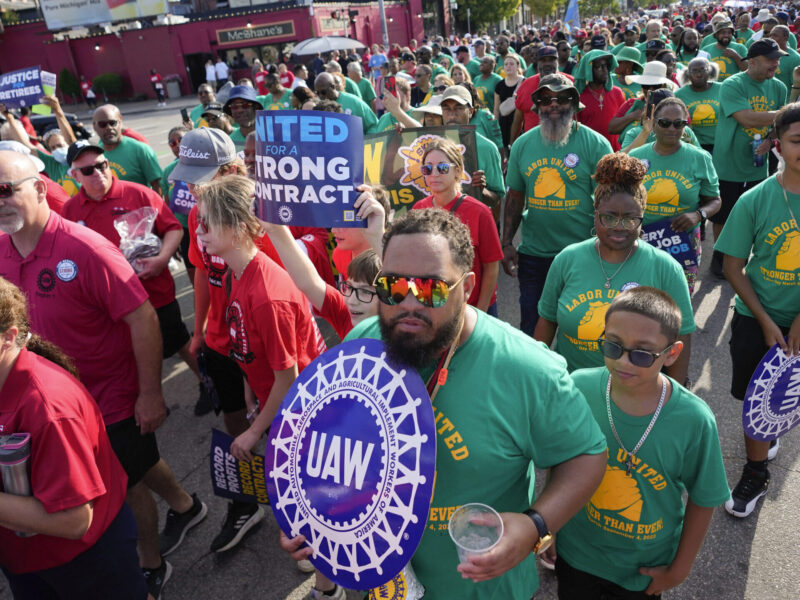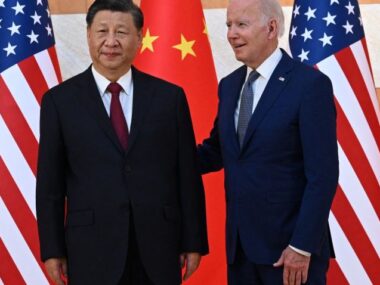With the historic strike initiated by the United Auto Workers (UAW), experts suggest that the US economy is already feeling the strain, but it’s unlikely to push the nation into a recession.
This is because the portion of the industry under union influence, though still substantial, no longer constitutes as large a share of the national economy as it once did, as noted by Gabriel Ehrlich, an economic forecaster at the University of Michigan.
The ultimate impact of the strike hinges on factors such as its duration, potential layoffs at other company plants, the number of workers participating in the strike, and the duration of negotiations between the unions and companies.
UAW President Shawn Fain asserted that their goal is not to harm the overall economy but rather to challenge the wealth of billionaires. Nevertheless, while estimates of the economic consequences of the strike may not indicate “wrecking the economy,” the repercussions could indeed be substantial.
For instance, if all UAW-affiliated workers at Ford, General Motors, and Stellantis were to strike for ten days, it could result in a $5 billion cost to the US economy, as estimated by the Anderson Economic Group.
Another estimate provided by Ehrlich suggests a more modest immediate ripple effect. In this scenario, if all UAW members engage in a two-week strike, approximately $440 million in national income would be lost. However, should the strike persist for eight weeks, the estimated impact on incomes across the country would be a substantial $9.1 billion.
These are the potential ways in which the strike could negatively impact the United States economy:
Businesses located in proximity to strike areas may experience a decline in their revenue.
Even though striking UAW members will receive $500 weekly in strike pay, it’s unlikely to be adequate to sustain their usual spending habits. Consequently, businesses located near the strike sites are likely to suffer revenue losses.
Should the strike persist for an extended duration, it may compel employers in the vicinity of the impacted auto plants to initiate layoffs, as noted by Tyler Theile, Vice President and Director of Public Policy at Anderson Economic Group.
Suppliers collaborating with the major automotive companies, often referred to as the Big Three, might find themselves forced to reduce their workforce.
Due to the fact that national car inventories still haven’t reached pre-pandemic levels, the Big Three automakers are going to be eager to resume production once the strike concludes, as noted by Ehrlich. This is why he anticipates that they will postpone canceling orders for essential parts from suppliers for as long as possible.
Nevertheless, when the automakers eventually decide to cancel these orders, it will set off a chain reaction within the parts supplier network. Initially, suppliers who have direct relationships with the automakers, often referred to as tier one suppliers, will attempt to retain their employees on the payroll because they are concerned about the difficulties of rehiring if they let people go; this behavior is known as “waiver hoarding.”
However, if the strike persists for an extended period, they will eventually have no option but to lay off workers.
Subsequently, the economic challenges may proliferate further. Tier two suppliers, which provide components to the tier one companies, may also be compelled to reduce their workforce as a consequence.
Tax revenue is expected to decrease as a result of these circumstances.
A decrease in the number of people employed due to the strikes will result in reduced tax revenue for the government. This is significant because it translates to fewer funds available for various programs.
At the state level, it’s estimated that Michigan, where many of the strikes are centered, could experience a decline of $10.6 million in tax revenue if the strike persists for two weeks.
The cost of automobiles might increase.
According to Anderson Economic Group, in the event of a 10-day strike, approximately 25,000 vehicles won’t be manufactured. This is expected to result in higher car prices, especially considering the existing shortage in inventory, as noted by Theile.
However, it’s important to note that the strike’s impact is not anticipated to be as severe as the disruptions caused by the COVID-19 pandemic and the computer chip shortages that significantly impacted the entire U.S. auto industry in recent years, according to Jonathan Smoke, Chief Economist for Cox Automotive.
Currently, prices for new vehicles have risen by nearly 3% compared to last year, as reported by the August Consumer Price Index.











